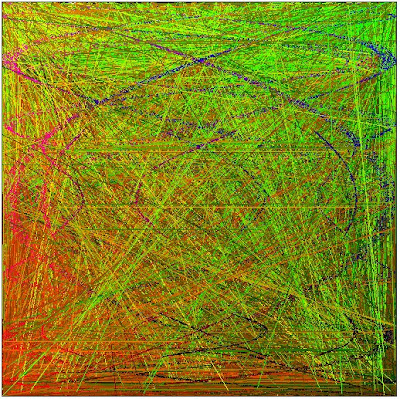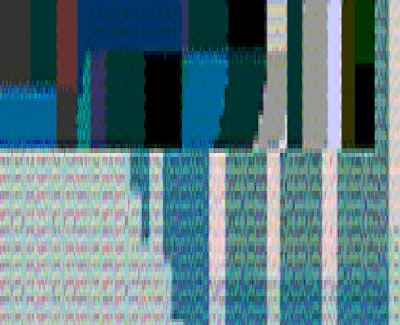
Sound Project: Program Note
Parabolic function as iterated through colour and melodic transforms
Edward Kelly
04’43”
This piece is a composition based on the manipulation of data from the generation of a parabola (and associated transforms) of the iterative function, y = R(x+1) where R is a constant and y re-enters the equation as consequent value of x.
The function output is transformed and mapped onto an LCD screen. There are a number of transforms operating ;
manipulation of the constant R, manipulation of the number of iterations used, inverting the X Y planes as the parabola is mapped, a variety of coulour options for the pixels as mapped, a variety of shapes/drawing options.
There are two melodic variations based on the function output and LCD state.
1. parabolic melody uses succesive iterations of the left hand parabola output for its melodic content. In this case note duration is responsible for triggering iterations of the parabola.
2. colour melody divides the screen into a 16 x 16 grid and samples the center pixel of each grid square. The parabolas operate independently of this, and note duration is responsible for triggering data sampling.
Both melodic forms translate the pixel data (location, colour) into melodic data (pitch, panning, amplitude, duration/rhythm).
The parabola dictates the melody in two ways
1. sucessive iterations as melodic form. Also when using the incremental colour scheme (this pre-samples the pixel colour data and increments it upon drawing) prior events can shape outcome.
2. the LCD state (as sampled) is completely dependant upon parabolic output.
Note : the different drawing options effect the melodic outcome only in that other areas of the screen are effected by these. This is very obvious whilst using the incremental colour scheme with larger ovals.
MP3 of performance and score at
http://www.esnips.com/web/cc2-iterativefunctionasaudio
Zip of MaxMSP files at
http://www.box.net/shared/i3j9vpssgk
